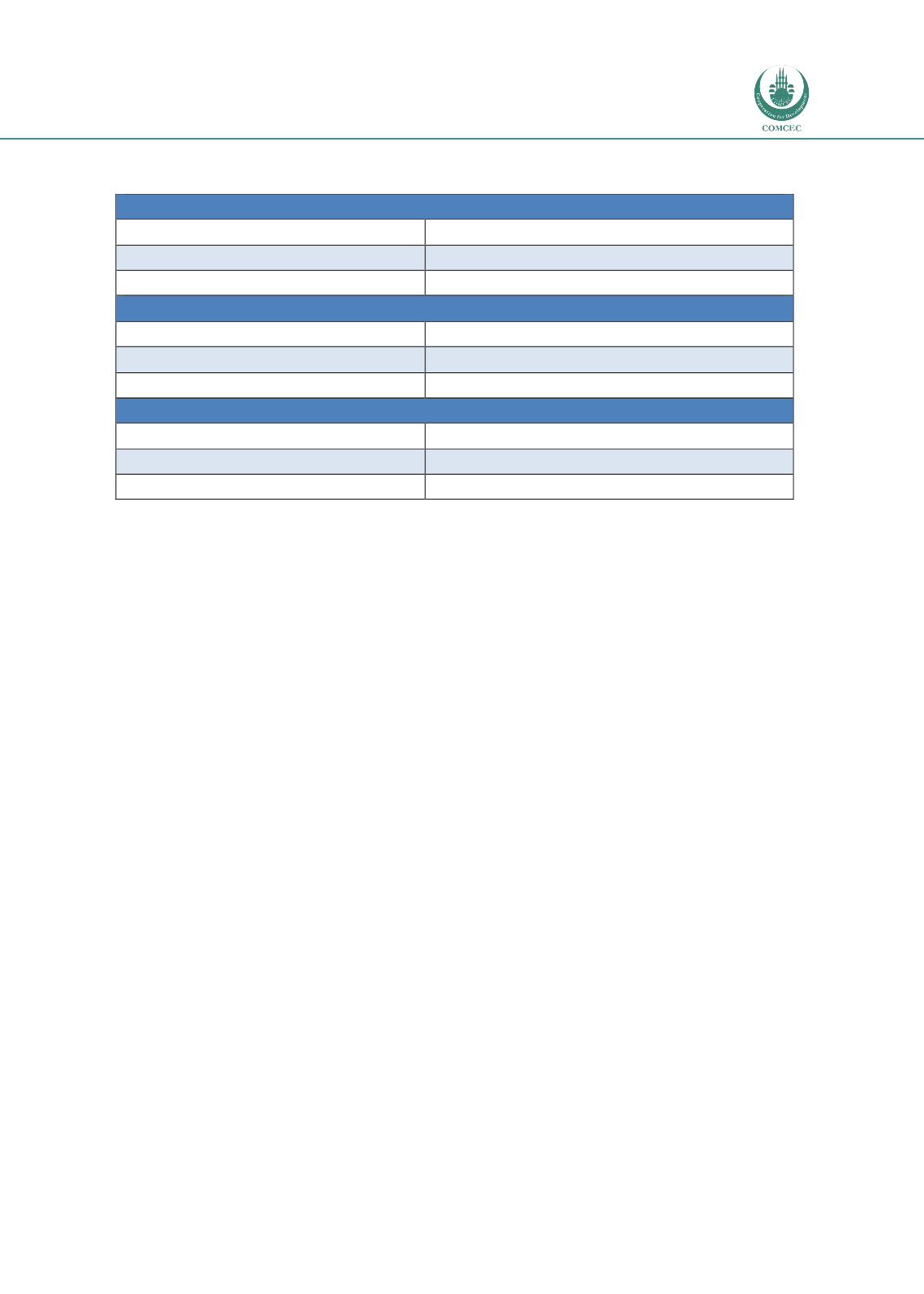

Promoting Agricultural Value Chains
In the OIC Member Countries
85
Table 5-2 Slaughtering situation in red meat production in Turkey
Source: ARDSI, 2013
The extent of this unregistered slaughtering can be partially attributed to the insufficient
number of large-scale modern enterprises suited to the practice. Of the 641 slaughterhouses
for bovine animals, only 181 are classified as Class 1 and 20 as Class 2 (20-40 animals a day).
Public slaughterhouses of Class 3 are usually managed by municipalities, but their facilities are
mostly outdated and well below modern standards relating to hygiene, food safety and animal
welfare. They only undertake 15-20 percent of present slaughtering, and would need to be in
fact fully replaced by more modern and adapted enterprises (IPARD, 2013).
The most important factors limiting ‘organic’ livestock production are the non-integration of
plant production with animal production in addition to the rarity of appropriate foodstuffs.
Again, a particular difficulty is that many farmers are small land owners and are not organised
to meet the costs of inspection and certification.
From a health and food safety standpoint, facilities at many meat enterprises require
upgrading to comply with EU requirements, especially in small enterprises involved in cooked
meat products. A number of legislative measures have been introduced and inspection services
organised but, in general, regulations governing the management of slaughtering and meat
enterprises are not yet harmonised with EU Community Standards. Moreover, the enforcement
of compliance, especially at local level, is not always effective. In its present state, the industry
needs incentives to raise standards for hygiene and environmental protection (World Bank,
2010). Significant work is needed on upgrading agri-food establishments to meet EU
standards, the identification and registration of animals, animal welfare, animal by-products
and the fight against animal diseases.
Still, a number of the more dynamic small to medium enterprises, besides the bigger integrated
enterprises, could be brought back to competitiveness conditions, as well as compliance with
modern quality standards, if properly supported.
Although not specifically addressed by the IPARD Programme (EU ascension programme),
many of the 39 registered animal markets will need to be upgraded under national support
schemes in the future.
Cattle
Carcass meat production (187kg/animal) 475,600 tonnes meat carcass
Registered Production
366,948 tonnes meat carcass
Balance
108,652 tonnes unregistered (22%)
Sheep & Goats
Meat carcass production (15 kg/animal)
262,442 tonnes meat carcass
Registered production
80,015 tonnes of meat carcass
Balance Sheep and goat meat
182,427 tonnes unregistered (69%)
Total meat
Total meat production
738,042 tonnes meat carcass
Total meat registered
446,963 tonnes meat carcass
Balance
291,079 tonnes meat carcass unregistered (40%)

















